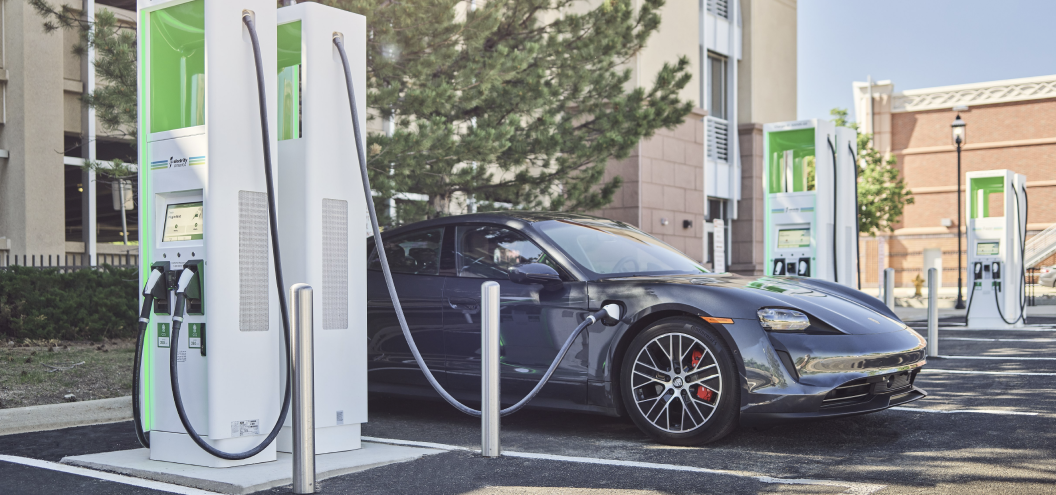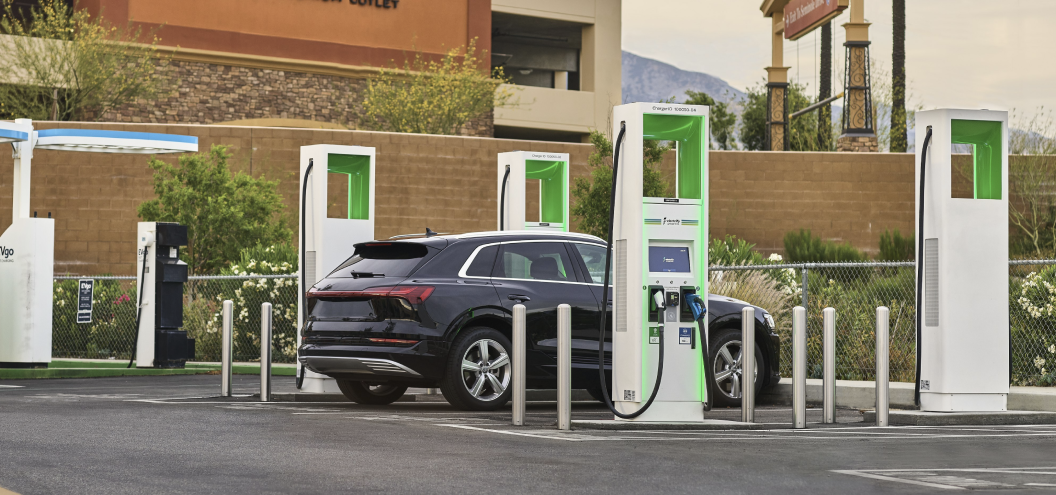Twice the Voltage, Half the Charging Time
As electric vehicles become more prevalent, and more drivers use their vehicles for longer trips, it’s possible that the country’s public charging infrastructure will become strained. While most electric vehicles will be charged overnight on a level 2 charger for day-to-day use, an increasing number of EVs on the road, and taking road trips, could create lines at public charging stations. It’s an issue that’s particularly acute for EVs, as charging times still are longer than the average fill-up at a gas pump.
During holidays, we’re used to seeing lines for gas at freeway rest stops, but they move quickly because a fill-up takes a couple of minutes – but we’ve all seen the stories about long waits at Tesla superchargers on Thanksgiving weekend. Clearly, public charging speed is still an issue – and will be an impediment to the future growth of the EV market.
One significant development that can help significantly improve charging time is the introduction of 800-volt electrical systems, which will supplant and may eventually replace the more common 400- and 450-volt systems used in most EVs. 800-volt systems bring with them a wide variety of benefits, including lower weight, higher thermal efficiency, and potentially greater range – but their biggest benefit is arguably significantly faster public charging.

Higher Voltage, Greater Efficiency
Why is an 800-volt system better? In short, the higher the voltage, the greater the efficiency. First introduced in racing series such as the Formula E global electric championship, 800-volt systems allow electricity to move from the battery to the wheels with lower current, which reduces the power lost to heat. The higher voltage and lower current means that the same amount of power can be moved using with thinner wires, and it also means that less copper needs to be used in the motors themselves – this reduces their weight, and also allows them to spin even faster, allowing higher performance. A simplified analogy is a power drill: the higher the voltage, the more powerful it is – and the faster it charges.
Faster charging is enabled with an 800-volt system because lower current reduces overheating in the charging cables and associated hardware – less power is lost to heat, and more is delivered to your car’s battery (power loss increases quadratically, i.e., to the fourth power, with current, so reducing the current has a huge effect on efficiency). Using similar cables and plugs, charging time can be dramatically improved. For instance, the Porsche Taycan, one of the few vehicles currently available with 800-volt systems, can charge its battery from 5 to 80 per cent in 22.5 minutes on a 270-kW 800-volt level 3 charger, while the same amount of charge on a 50-kW, 400-volt level 3 charger takes up to 90 minutes.
800-volt systems bring many additional benefits to electric vehicles. Not needing as much copper throughout the vehicle to deliver the same performance reduces weight, which positively impacts both performance and range; higher voltage kicks off a virtuous cycle that makes EVs faster and more efficient.

Where Can I Get 800-Volt Charging?
At the moment, 800-volt electrical systems are not commonplace in electric vehicles. The Porsche Taycan was the first EV available with an 800-volt architecture; its relative, the Audi e-tron GT, also has an 800-volt system, as do the Hyundai Ioniq 5 and Kia EV6. Rivian and General Motors have both announced that their upcoming products are 800-volt ready, and both plan to introduce 800-volt systems along the way, with GM committing to an 800-volt option for its new Ultium battery architecture. Startup brand Lucid actually has a 920 (!)-volt system for its new Lucid Air sedan, which has just hit the market. Global supplier Delphi sees a broad shift towards 800-volt architectures for premium EVs, followed by rapid adoption by mainstream brands.
The move to 800 volts requires not just the cars to be enabled, it needs charging equipment that can take advantage of that architecture. Most level 3 chargers run on 400-volt systems and can deliver from 50 to 150 kW; 800-volt chargers can deliver up to 350 kW but are still not very common. Ionity, Tritium, and Electrify America are the biggest players, with most offering at least one 350-kW charger alongside multiple 150-kW chargers in convenient locations.
As with any other technology, the roll-out of 800-volt systems and the charging infrastructure to support them, will happen rapidly. While currently a “premium” technology, it’s already spreading to more mainstream car brands, and the increased convenience that super-fast charging offers will be irresistible to the EV owners of the future.

















